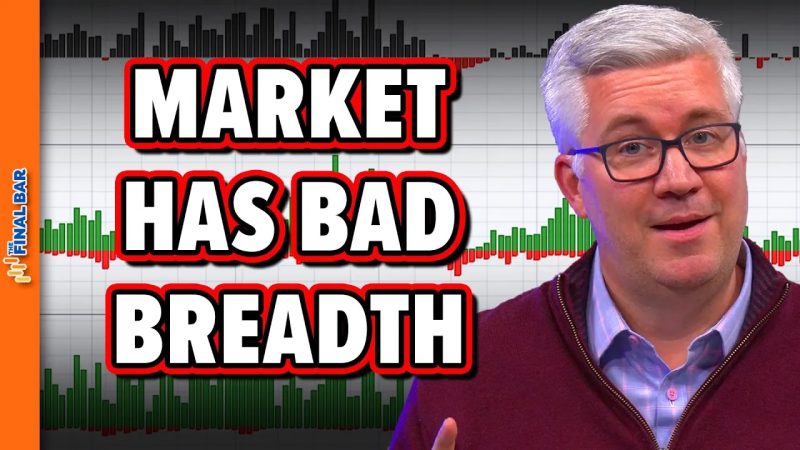Market breadth is a critical indicator that provides valuable insights into the overall health and performance of the stock market. It offers investors a snapshot of the participation of various stocks in a particular market index or exchange, shedding light on the extent of market movement beyond just a few large-cap stocks. While poor market breadth can be a cause for concern, it is essential to understand its implications and potential impact on investment decisions.
One of the key reasons investors should pay attention to market breadth is its ability to reveal the underlying strength or weakness of a market rally. A market rally that is supported by a broad range of stocks across different sectors is considered more sustainable and robust compared to a rally driven by a handful of high-performing stocks. When market breadth is poor, with only a small number of stocks driving the overall index higher, it may indicate a lack of widespread participation and underlying weakness in the market.
Another important aspect of poor market breadth is its potential impact on investment diversification. Diversification is a fundamental risk management strategy that involves spreading investments across different asset classes to reduce exposure to any single investment or sector. In a market environment characterized by poor breadth, where only a few stocks are driving the majority of gains, the benefits of diversification may be diminished. Investors heavily concentrated in the outperforming stocks may be vulnerable to sudden market corrections if those stocks falter.
Furthermore, poor market breadth can also signal potential shifts in market sentiment and investor behavior. For instance, if only a select few stocks are consistently outperforming while the broader market struggles, it may indicate a lack of conviction among investors and a skew towards speculative or momentum-driven trading. Such conditions can increase market volatility and raise the risk of sudden downturns as sentiment changes.
It is important for investors to closely monitor market breadth indicators alongside other fundamental and technical analysis tools to gain a comprehensive understanding of market dynamics. While poor market breadth can be a warning sign, it is not a definitive signal of an imminent market crash or downturn. Investors should consider a holistic approach to assessing market conditions and make informed decisions based on a combination of factors.
In conclusion, poor market breadth should not be ignored, as it can offer valuable insights into the health and sustainability of a market rally. By understanding the implications of poor breadth and its impact on investment diversification and market sentiment, investors can make more informed decisions to manage risks effectively. Keep a watchful eye on market breadth indicators to navigate volatile market conditions and stay ahead of potential market shifts.

